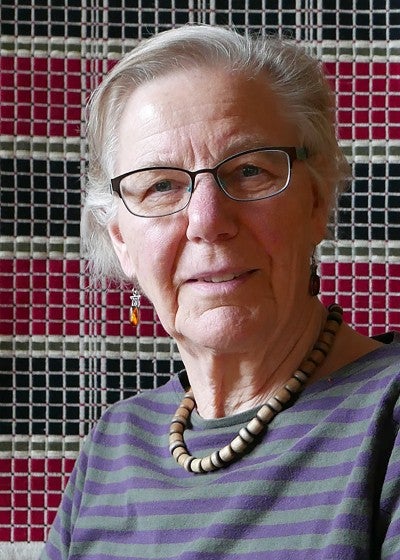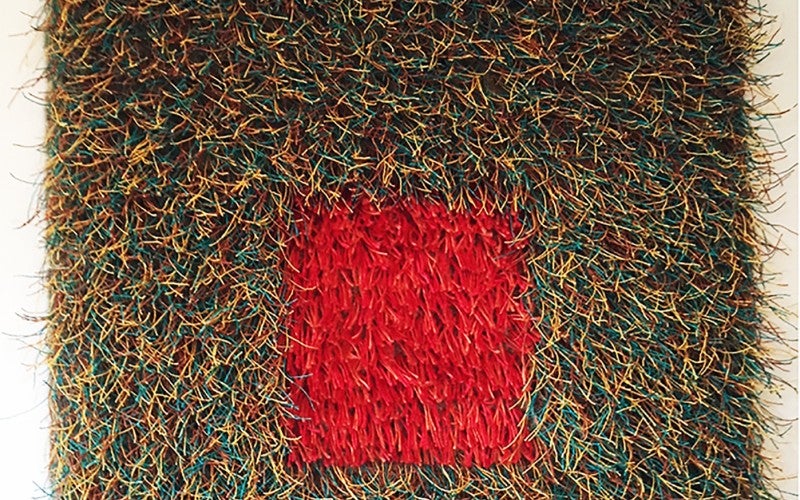Leena Mela Riker is a traditional Finnish weaver. The techniques to produce rya and raanu loom weavings have been passed through the generations and are still in use by present-day textile designers. Riker’s work has been widely exhibited in galleries and textile shows in Portland and on the Oregon coast.
Bio
Leena Mela Riker is a traditional Finnish weaver. The techniques to produce rya and raanu loom weavings have been passed through the generations and are still in use by present-day textile designers. Riker, who started weaving in the mid-1970s, was further inspired in part by the work shown at the 1996 International Weavers Conference in Portland. She set her sights on mastering two traditional Finnish weaving techniques: raanu and rya (ryijy in Finnish). An Oregon coast resident for over a decade, Riker moved to the US from Finland in 1964. Her mother, a teacher, loved to prepare the traditional dishes that marked Finnish holidays--lutefisk on Christmas Eve, freshly baked ham on Christmas Day. When Riker was four years old, her mother taught her how to knit. Sewing and embroidery would soon follow. As for cooking, Riker could put together a meal for their family of four before she entered middle school. After purchasing a countermarch loom in Portland, Riker began to teach herself rya and raanu weaving techniques. A rya tapestry is similar in nature to a knotted Persian carpet with woven rows of weft alternating with rows of knotted yarn. The knots are spaced farther apart than those in a Persian carpet and are much larger and longer. The work takes on a rich texture thanks to the knots, which Riker makes from two to three strands of wool or other fiber in differing shades of color. Raanu is a term for a group of weaving techniques, generally weft-faced, that Finns traditionally used as coverlets. They are usually tightly woven and stiff, and the patterns vary widely. The warp was traditionally linen, although these days Finnish weavers often use cotton. Today raanus are generally used as sofa throws or wall hangings. Riker, whose accomplishments are well-known, has been president of the Finnish Brotherhood Auxiliary and the Trustees, and has written extensively on the Finnish traditional dishes that remain ever popular in Astoria. She has exhibited her weavings in galleries and textile shows in Portland and on the Oregon coast, and in shows of Finnish textiles in Minnesota and Finland.





